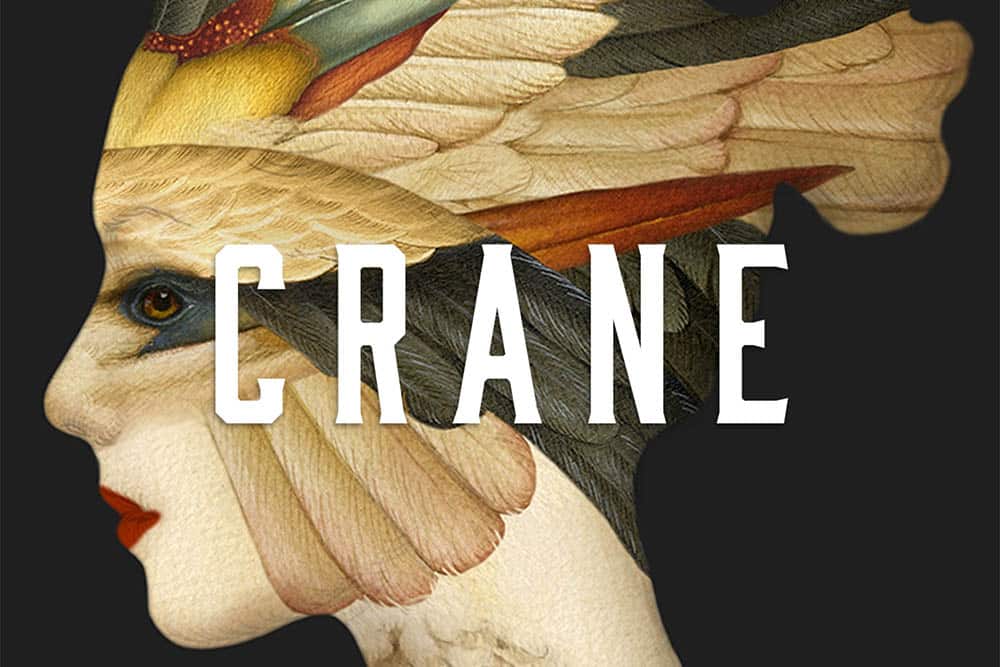
In The Crane Husband, award-winning author Kelly Barnhill adapts the traditional Japanese folktale The Crane Wife for a modern Western audience. Barnhills infuses the original tale with new meaning in her novella, reimagining the original story through a contemporary lens. The result is a grim and devastating dark fantasy that takes an unflinching look at the horrors of domestic violence, cycles of abuse, family, and fears of abandonment.
Like most folklore, there are variations of the original story. One version makes an appearance in The Crane Husband — a narrative nested within a narrative — when the novella’s unnamed narrator remembers her father telling her a story on his deathbed. This version of the folktale involves a crane transforming herself into a woman so she can marry the man who saved her life. To support the two of them, she weaves fabric that her husband sells; her only caveat is that her husband never interrupts her while she is weaving.
Their business prospers, but after a while the husband grows greedy and demands more and more from his wife. One day he grows so frustrated that he bursts into her room to admonish her,but instead of seeing his wife weaving at her loom, he sees a crane. The crane, upon realizing that her true identity has been revealed, flies away to never return.
Barnill’s retelling maintains the central premise of the original folklore — the exploitation of women at the hands of men — while adding an extra layer of depth and nuance. The Crane Husband’s unnamed narrator is a 15-year-old girl who lives with her widowed mother and younger brother in an old Midwestern farmhouse. Here, Barnhill explores themes of child adultification: the narrator has had to take over managing the household and looking after her younger brother since the passing of her father years before. The family survives on the income made from her mother’s massive tapestries made from gathered items and fibers.
The family’s lives are turned upside down when her mother brings a lover home one evening. This is unsurprising in and of itself — as a widow, the mother has had numerous flings — but this new partner is different from the others. He is a six-foot-tall crane. At first, the narrator and her brother decide to wait for the relationship to run its course, but it quickly becomes clear that the crane has no plans to leave.
The crane’s presence has a strange effect on their mother. She appears to be infatuated with him, spending all day locked in her art studio with the crane, weaving a bespoke tapestry for him instead of making tapestries to pay the bills. The narrator watches helplessly as her mother is consumed by her obsession with the crane and the fervor of artistic pursuit. The infatuation eventually becomes so all-encompassing, her mother starts to neglect herself and the narrator and her brother.
Most alarming are the fresh cuts and bruises that appear daily on their mother’s skin. The narrator does her best to take care of her mother. When the narrator tries to get her mother to eat food after not eating for days, her mother replies, “how can I eat when I am so full of love?” When the neglect climaxes to the point of a social worker’s visit, the narrator vows to take matters into her own hands and do whatever it takes to rescue her mother, protect her brother, and keep her family together.
Barnhill’s bold decision to make the crane a literal crane, rather than anthropomorphizing it like the original folktale does, lends an edge of surrealism to The Crane Husband without dulling its emotional impact. It creates an unsettling, discomfiting atmosphere that serves to underscore the gut-wrenching subject matter of the novella. I found myself accepting this part of the story easily — it’s a testament to Barnhill’s writing prowess that she is able to persuade readers into suspending disbelief and surrendering fully to the absurd so quickly. Barnhill’s experience writing children’s fantasy literature is evident in the story’s deft, storied prose as Barnhill guides the reader through a story that, at first seems whimsical, but quickly turns nightmarish.
Generational trauma sits at the heart of The Crane Husband. In a scene near the beginning, the narrator’s mother tells her daughter about the men of their family. The narrator’s grandfather is described as a “hard man, from a long line of hard men” by her mother. The women of the family have a tendency of vanishing. According to town rumors, the narrator’s great-grandmother skipped town one day on a boxcar that was bound for San Francisco. According to the narrator’s mother, however, her great-grandmother didn’t run away; she transformed into a bird and flew away. In the subsequent chapters, we watch the narrator — who is so unbearably young — slowly start to realize these generational patterns of abuse first-hand.
The Crane Husband deals with emotionally heavy themes — abuse, grief, generational trauma, childhood adultification — but, ultimately, the novella’s short length prevents them from resonating very strongly. The abrupt denouement, which arrives suddenly after the steady pacing of the rest of the novella, also serves to sever the emotional build-up from the earlier chapters.
Still, Barnhill pulls off an incredible feat by packing such a tightly written story into a mere 120 pages. The Crane Husband succeeds in being a harrowing meditation on perpetual cycles of abuse, the gendered aspect of labor, and a vivid exploration of artistic obsession.


![Call for Papers: All Things Reconsidered [MUSIC] May-August 2024](https://www.popmatters.com/wp-content/uploads/2024/04/all-things-reconsidered-call-music-may-2024-720x380.jpg)



